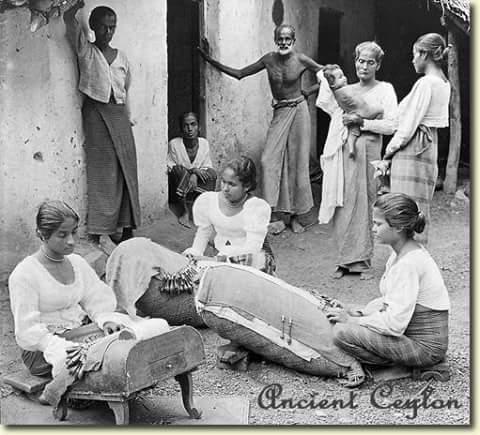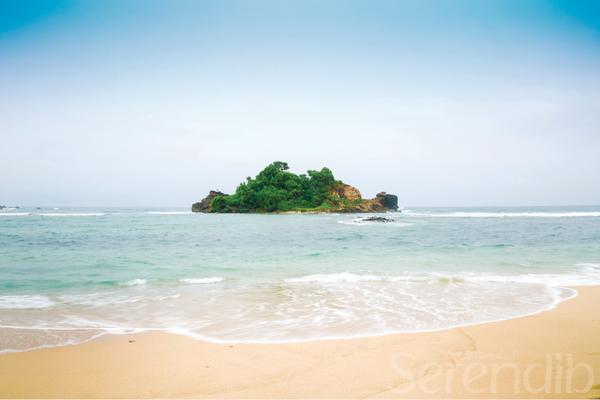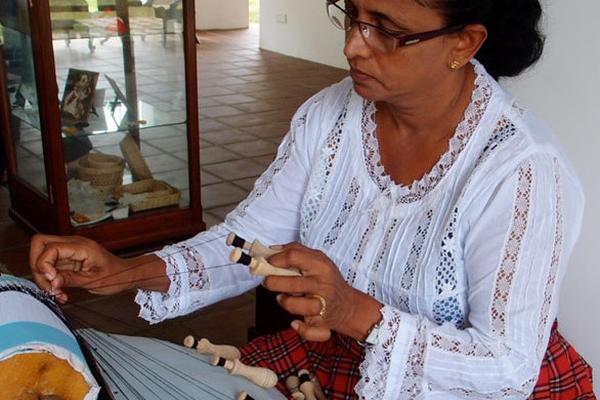
There seems to be some disagreement about who introduced lace making into the south of Sri Lanka.
Some think it was the Dutch but in fact most believe it more likely to have arrived with the Portuguese, who remained in Sri Lanka from the early 1500s to the mid 1600s. Studies have established that the craft was first taught by the wives of the Portuguese colonisers to noble women of the Sinhala courts. The local term for lace is renda, a Portuguese word, and the Sinhala word 'beeralu' is derived from the Portuguese words 'bilrof' or 'biralureinda' contributing to why the Portuguese have been credited with introducing beeralu lace-making in Sri Lanka.
However it may have in fact been the Malays.

But whoever takes the credit for introducing this highly skilled craft we should all be grateful there remain a handful of ladies who practice it.

Based mostly in the south of the island around and inside Galle Fort where they can be found working away in the Museum, their wares are sold by street traders. Sadly these vendors based in the Fort adopt annoying sale techniques that detract from the highly intricate lace work of sheets, skirts/blouses, table cloths and table ware. But if you are able to rise above that and have the energy for some negotiation, you will cherish the purchase.